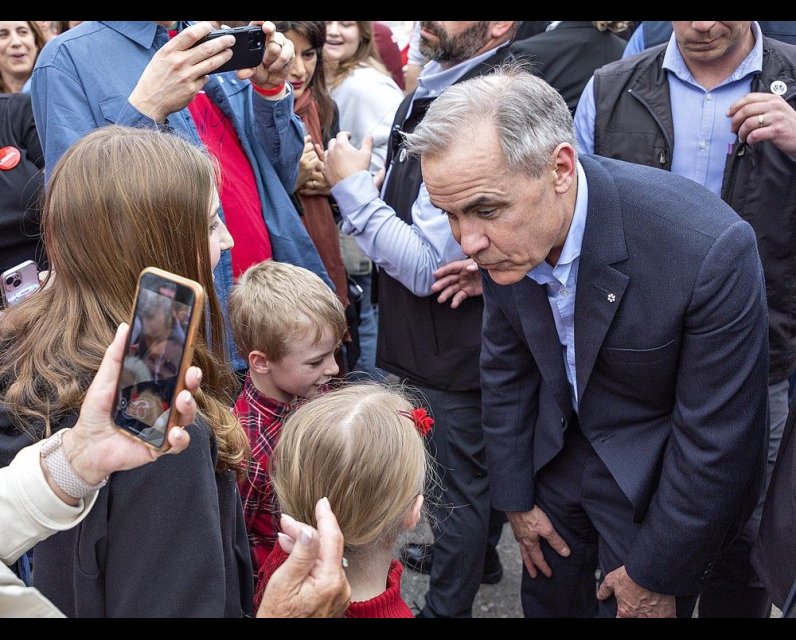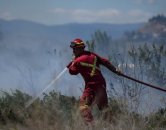Source Feed: National Post
Author: John Ivison
Publication Date: April 19, 2025 - 12:57
John Ivison: Mark Carney's platform relies on fiscal alchemy and hopeful assumptions
April 19, 2025

WHITBY, ONT. — On
this week’s Ivison video
, regular guest Eugene Lang referred to “the trifecta — or what Van Morrison
would call The Great Deception.”
Lang, an experienced Liberal operative, was talking about the tendency of governments to promise to simultaneously reduce taxes, increase spending and balance budgets.
“This kind of thing has never been achieved by any federal government,” he said. “It’s probably not advisable in any context, especially not the current context, where the prospects are that the Canadian economy is probably going to go into a recession, where the tax revenues will go down and automatic stabilizer expenditures on things like employment insurance are destined to go up.”
Yet, that’s exactly what the Liberal policy platform promises to do.
It commits to a $20 billion income tax cut, “investments” of $129 billion, and a balanced operating budget within three years, eliminating the current $15 billion operating deficit.
These documents are not drawn up under oath and there appear to be a number of highly presumptuous assumptions.
For one thing, the baseline for all the calculations is a Parliamentary Budget Officer report from March, when the tariff situation was still in flux.
For another, the platform books $30 billion in savings from productivity improvements over three years. All governments say they will make savings, improve program efficiency and cut red tape but they generally don’t make them the backbone of their revenue assumptions.
More prudently, the platform only includes tariff revenues for the current year. I asked Liberal Leader Mark Carney if that suggests he thinks the trade war will be resolved in 2025.
He replied that it is more a matter of fiscal caution. “I don’t think we want to rely on those revenues,” he said.
Two decades of covering revenue projections have bred a deep cynicism. It is a truism that governments should be judged by results, not intentions.
That said, the Liberals should be commended for taking on problems deeply ingrained in the Canadian economy.
The focus of the platform is capital spending. In 2021, the Liberal platform devoted 65 per cent of its “investments” to the operating budget — consumption — and just 32 percent to capital spending on projects designed to generate future revenues.
In this document, that ratio is reversed: 33 percent on operations and 64 percent on capital.
The intent is to trigger private sector investment through government intervention designed to reduce uncertainty and bolster confidence among investors.
Carney said the Trudeau government spent too much and invested too little. He said the new plan would reduce operating spending increases to an average of less than 2 per cent a year, from an average of 9 per cent over the past decade. He said his government would do this without cutting transfers to individuals or to provinces for things like health care.
Dental care, child care and the Canada Child Benefit will all be protected, though the platform does not commit to any expansion of pharmacare. This is the fiscal equivalent of turning base metal into gold.
But there is at least an attempt to tackle the productivity issue.
The platform provides more details on the plan to build trade corridors and eliminate barriers to internal trade; on improved credentials recognition for professionals; and on “major nation-building projects like expanding the Port of Churchill in Manitoba.
Carney has been criticized for saying he will not repeal the former bill C-69, the Impact Assessment Act. But the platform says a Liberal government would establish a “one-window” project review with a maximum two-year timeline (down from five years) and invite provinces and territories to sign cooperation agreements that would allow them to lead environmental reviews.
Carney’s plan for the industrial carbon tax remains opaque. The platform says a Liberal government would “improve” the current system and work with governments to link their large-emitter markets across the country “to establish a long-term signal to lock in investments”.
I asked Carney to expand on this at the morning press conference. He said that the new plan would create opportunities for provinces to opt into an “augmented” system. Large emitters could fund measures that would reduce emissions for people, like retrofits or electric vehicles, he said. He said the government wants to give emitters a chance to save carbon for themselves or for others.
The document says the new plan will “make sure that Canadian industry reduces emissions, is still competitive and is able to withstand America’s trade war”.
But how that will all work is still unclear, at least to me, and Canadians deserve a more fulsome explanation before election day.
Another area where the platform promises to implement policies that are long overdue is in relation to defence. The biggest single ticket item in the platform is a pledge to spend $30 billion on defence on an upfront sticker price basis (or $18 billion on an accrual basis, which is how the government accounts for it in the fiscal framework).
Members of the Canadian Armed Forces will get a pay raise; there will be more investment in housing for the Forces; there are commitments to expand fleets of aerial and underwater drones; and there will be new investments in self-propelled artillery systems and air defence capabilities.
The combined impact will take Canada’s defence spending to two per cent of GDP by 2028-29, though Carney conceded in the press conference that the NATO summit at the end of June might change that timetable. “It is possible that we’ll need to do more,” he said.
It is an ambitious platform, commendable in many ways. Carney, as with all the leaders in this election, wants the best of his country.
But Donald Trump wants to own Canada and Greenland. Just because leaders want something to happen, doesn’t make it a reality.
jivison@criffel.ca
Twitter.com/IvisonJ
National Post
Get more deep-dive National Post political coverage and analysis in your inbox with the Political Hack newsletter, where Ottawa bureau chief Stuart Thomson and political analyst Tasha Kheiriddin get at what’s really going on behind the scenes on Parliament Hill every Wednesday and Friday, exclusively for subscribers. Sign up here.
Canada’s wildfire season is getting started but it's not emerging as a hot topic in the federal election campaign so far. Here's what the parties have pledged.
April 21, 2025 - 13:54 | Saba Aziz | Global News - Canada
If you’re reading this on the web or someone forwarded this e-mail newsletter to you, you can sign up for Globe Climate and all Globe newsletters here.Good afternoon, and welcome to Globe Climate, a newsletter about climate change, environment and resources in Canada.Tomorrow is Earth Day, and there are plenty of activities that you can join across the country to help clean up your neighbourhood and find like-minded community members. And, of course, it’s also your yearly reminder that caring about the environment is not limited to a single day – it’s everyday here at Globe Climate.
April 21, 2025 - 13:22 | Sierra Bein | The Globe and Mail
A Canadian cardinal was a top contender the last time a new pope was elected, but observers say that’s unlikely to be the case this time around.Canada’s five cardinals all have marks against them, ranging from advanced age to inexperience to allegations of sexual misconduct, according to Vatican experts.
April 21, 2025 - 12:45 | Maura Forrest | The Globe and Mail


Comments
Be the first to comment